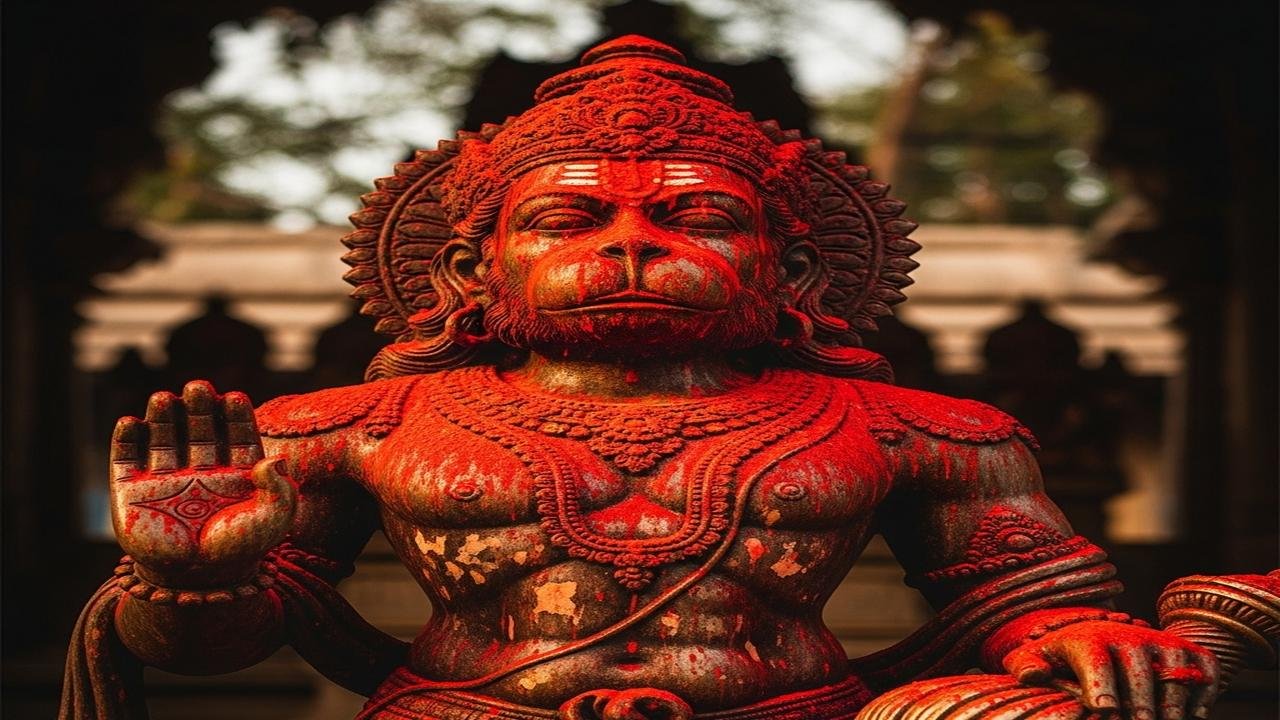The Real Reason Lord Hanuman Is Drenched in Sindoor

Why is Lord Hanuman covered in sindoor?
Walking into a Hanuman temple, the first thing many of us notice is the bright red figure at the center. The statue seems dipped in the color of sunrise — sindoor or vermilion — and devotees touch it with folded hands, offering prayers and a gentle pat. That vivid red is not just paint; it is a living symbol woven into stories, faith, and everyday devotion.
There are warm, beloved tales that try to explain why Hanuman gleams in sindoor. One popular story tells of Sita Mata, who wanted her husband Lord Rama to stay safe and long-lived. She believed that sindoor brought protection and strength. When she saw Hanuman’s boundless devotion and asked how she could honor him, she playfully smeared a bit of sindoor on his body. Hanuman, with his simple heart, liked the color and the blessing so much that he covered himself all over with it. From that moment many say his body shone red as a sign of his love for Rama and his dedication to dharma.
Whether heard as myth or memory, this story brings home a deeper truth: sindoor on Hanuman is a symbol of whole-hearted devotion. In Indian culture, sindoor has long been linked to power, protection and the sacred energy called shakti. For married women, it marks a vow; for Hanuman, it marks a life lived in single-pointed service. The red is not merely decorative — it speaks of inner fire, courage, and the radiant energy that conquers fear.
There is also a simple, everyday reason behind the practice. Devotees often offer sindoor to the deity as a sign of love and gratitude. A little paste is applied to the idol, then touched to the forehead of the worshipper as prasad (blessing). This small ritual connects the heart of the devotee to the heart of the divine, and to a centuries-old tradition of expressing devotion in a tangible way.
What does sindoor represent in this context?
- Energy and courage: The red color stands for vitality and inner strength that Hanuman embodies.
- Devotion: Sindoor symbolizes the intensity of bhakti — total surrender and love for the divine.
- Protection: Many believe that sindoor has protective qualities and keeps negative forces away.
- Connection to cultural life: It ties temple rituals to home traditions, where sindoor is also a daily symbol for many families.
Over time, this practice has taken on many gentle forms. In some temples, priests apply a thin layer of sindoor mixed with oil as a sacred anointing. Devotees then press their foreheads to the idol or wipe the same sindoor on their own forehead. Children watch elders do this and learn a visual language of reverence — that love can be shown through touch, color, and simple offerings.
Today, festivals like Hanuman Jayanti see mountains of red flowers and bowls of kumkum around every shrine. People come seeking courage to face life’s challenges, healing for the weary, and inspiration to serve others like Hanuman did. The sindoor reminds us of a small, powerful lesson: devotion matched with action becomes strength for the world.
Conclusion
When you see Lord Hanuman covered in sindoor, remember it as more than a tradition — it is a story of love, bravery, and pure service. That red glow invites us to kindle our own inner strength and offer it with humility. Take a quiet moment today to reflect on what devotion asks of you, and let that gentle fire guide your steps.
